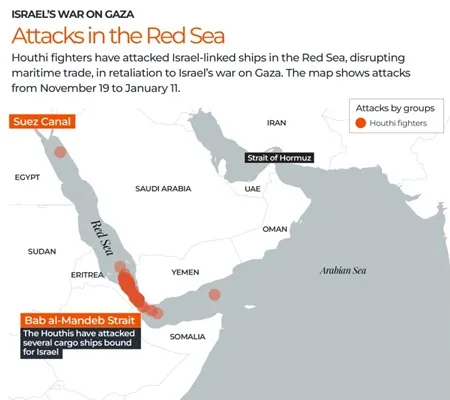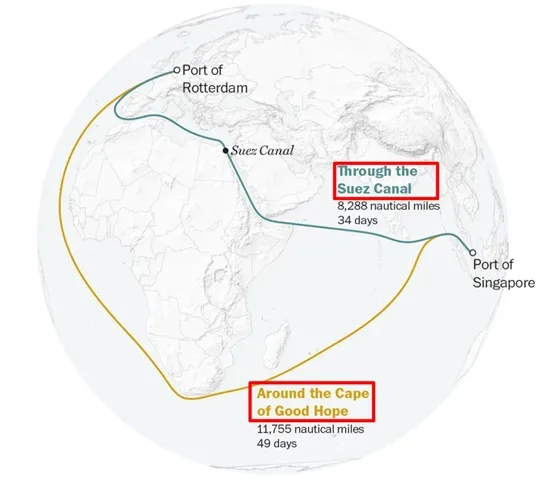Suez Canal Expects $7B Drop in Revenue for 2024
With the Houthis attacking ships in the Red Sea, the maritime traffic through the Suez Canal has dropped dramatically in 2024. This is then reflected in a sharp drop in revenue to the Suez Canal Authority (SCA) which forecasts a shortfall of USD 7 billion in revenue for 2024, representing a 60% year-on-year decrease.
Since November 2023, the Houthis have conducted more than one hundred attacks on seagoing vessels, civilian and military, creating the #RedSeaCrisis. Shipping lines have thus decided to reroute most of their vessels along the longer but safer Cape Route, rather than the shorter but riskier Suez Route.

The Suez Canal sees nearly 12% of the global trade and is a major source of revenue for Egypt. On its own, the Suez Canal contributes about 2% to the GDP of Egypt. Conversely, the maritime traffic around the Cape of Good Hope has shot up by nearly 89% from 2023 to 2024, according to an 2024 UNCTAD survey on maritime transport.
As another alternative route between Asia and Europe, we have the Arctic Route. However, that route is only practicable during the warmer months of the year. Otherwise, the ice layer over the sea is too thick for commercial ships even if equipped with ice-breaking capabilities.

(Actual transit times will vary on ship speed and sea conditions)
With more ships taking the Cape Route, the port of Durban in South Africa has witnessed a surge in traffic. Therefore, Durban has attempted to enhance its productivity in order to cope for the increase in traffic, but long queues and delays remain a challenge.
Port Louis is another seaport which lies on the Cape Route linking Asia and Europe, but it has also not been able to capitalize completely on the conjunctural bounty caused by the Rea Sea Crisis. However, the bunkering business has been booming with a doubling in the sales and provisioning of ship fuel.
Nevertheless, Egypt remains optimistic about the long-term prospects of the Suez Canal and has even invested in expanding the critical waterway. Following the Ever Given accident which blocked the canal in 2021, Subsequently, Egypt invested nearly USD 200 million to widen a 10-km section on the southern side to allow for two-way traffic and reduce risk of blockages.

